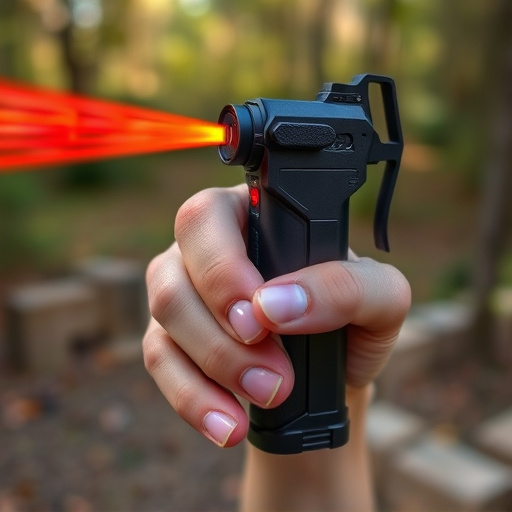Pepper spray equipment is a vital component of law enforcement tools, offering aerosol cans, foam sprays, and handheld devices with distinct applications. Proper first aid, including 15 minutes of eye flushing, is crucial post-exposure alongside medical attention for severe symptoms. Effective management and training maximize its less-lethal capabilities while minimizing risks. Immediate care, such as moving to fresh air, rinsing affected areas, and staying hydrated, remains paramount for both officers and affected individuals after pepper spray exposure. Regular cleaning, inspection, proper storage in cool, dry places, and security measures ensure the equipment's effectiveness and longevity.
“Uncovering the essential tools of modern law enforcement, this article delves into pepper spray equipment and its critical role in public safety. From understanding the diverse types and their applications to mastering immediate care after exposure—a crucial aspect often overlooked—we explore best practices for both maintenance and storage. Effective management of pepper spray gear ensures optimal performance when it matters most, making it an indispensable resource for officers on the frontlines. Discover key strategies for keeping this powerful tool ready and reliable.”
- Understanding Pepper Spray Equipment: Types and Uses
- Immediate Care After Exposure to Pepper Spray
- Best Practices for Maintaining and Storing Pepper Spray Equipment
Understanding Pepper Spray Equipment: Types and Uses
Pepper spray equipment is a critical component of law enforcement agencies’ toolkits, designed to subdue and control individuals in various high-risk situations. Understanding the different types and their uses is essential for both officers and those requiring immediate care. The most common types include aerosol cans, foam sprays, and handheld devices that emit a fine mist. Each has unique features and applications; for instance, aerosol cans provide a wide coverage area but require proper ventilation, while foam sprays stick to targets, making them ideal for crowded spaces.
Immediate care after exposure to pepper spray is crucial. Officers must ensure the safety and comfort of those affected by promptly administering first aid, which includes flushing eyes with clean water for at least 15 minutes and seeking medical attention if symptoms persist or are severe. Proper training in the use and management of pepper spray equipment is vital to minimize risks and maximize its effectiveness as a less-lethal force option.
Immediate Care After Exposure to Pepper Spray
After exposure to pepper spray, immediate care is crucial to mitigate discomfort and ensure safety. If a person comes into contact with pepper spray, they should immediately move to an area with fresh air. Removing any contaminated clothing or accessories, especially around the face and eyes, is essential to prevent further irritation. Rinsing affected areas with water for at least 15 minutes can help dilute the chemical agents.
For eye exposure, flushing with clean water for several minutes and seeking medical attention if irritation persists are recommended. Inhaling pepper spray can cause respiratory distress; therefore, victims should take slow, controlled breaths or use a rescue inhaler if available. Staying calm and hydrated is vital during recovery, as it aids in the body’s natural detoxification process.
Best Practices for Maintaining and Storing Pepper Spray Equipment
Maintaining and storing pepper spray equipment properly is crucial for ensuring its effectiveness and longevity, especially in law enforcement settings. Best practices include regular cleaning and inspection to prevent buildup of residue and ensure proper functioning. It’s important to store pepper spray in a cool, dry place away from direct sunlight or extreme temperatures, which can affect the chemical composition. Additionally, keep them out of reach of unauthorized personnel to maintain security.
Immediate care after use is also vital. After each deployment, clean the spray nozzle and cannister thoroughly to remove any residual chemicals or debris that may impair future performance. This includes disassembling the unit if necessary, rinsing components with distilled water, and allowing them to air dry completely before reassembling and storing again. Such diligent maintenance promotes optimal functioning when it matters most during law enforcement operations.
Pepper spray equipment is a valuable tool for law enforcement, offering a quick and effective means of control in various situations. By understanding the different types, their uses, and implementing proper maintenance practices, officers can ensure these devices are always ready when needed. Moreover, being equipped with knowledge on immediate care after exposure is crucial to mitigate risks and promote safe de-escalation tactics. Remember, proper handling and awareness are key to maximising the effectiveness of pepper spray while ensuring the safety of both officers and suspects. For efficient immediate care for pepper spray exposure, follow best practices and guidelines outlined in this article.
